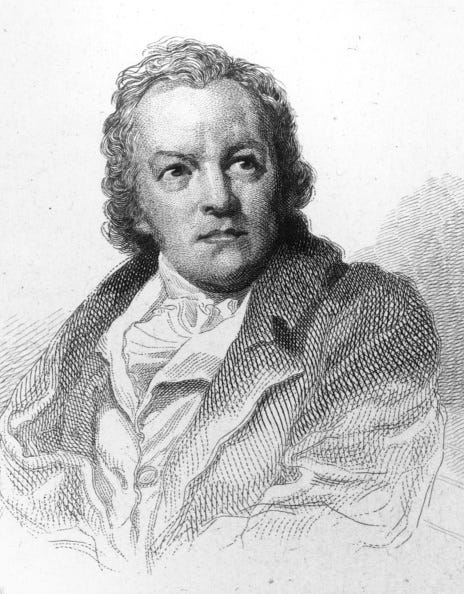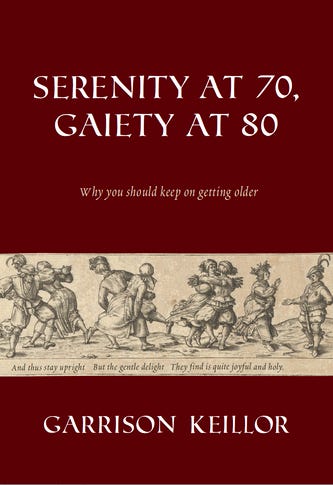
The Writer's Almanac from Tuesday, November 28, 2017
“Brushing Teeth with My Sister after the Wake” by Jim Daniels from The Middle Ages. © Red Mountain Press, 2018.
ORIGINAL TEXT AND AUDIO - 2017
Today is the birthday of novelist, biographer, and essayist Nancy Mitford (1904), born in London. She was unapologetically aristocratic, but that didn't stop her from satirizing her own class. Her parents were illiterate, and anti-education; she and her five younger sisters called their father "Old Subhuman." Mitford wrote: "I grew up as ignorant as an owl, came out in London and went to a great many balls. ... Here I met various people who were not ignorant at all — I made friends with the sort of people which included Messrs. Evelyn Waugh, John Betjeman, Sir Maurice Bowra and the brilliant Lord Berners. Very soon I became an intellectual snob. I tried to educate myself, read enormously and wrote a few indifferent novels." She published her first novel, Highland Fling, in 1931.
She also wrote four biographies, and served as a regular columnist for the Sunday Times. She wrote a controversial essay on upper- and non-upper-class grammar called "The English Aristocracy" (1954). She intended the essay on "U and non-U English" to be a light-hearted tease, but it served to cement her reputation as a snob.
She wrote to a friend, "If one can't be happy, one must be amused, don't you agree?"
The Grand Ole Opry began broadcasting from Nashville on this date in 1925. It was called the "WSM Barn Dance" at first. WSM was a new radio station that had been started in Nashville by the National Life and Accident Insurance Company, who wanted to use the station to sell insurance; the call letters stood for "We Shield Millions," which was the company's motto. WSM had recently hired George D. Hay, a former Memphis reporter turned program director, and at 8 o'clock p.m. on this date, he introduced himself as a "Sober Old Judge" (he was 30) and launched the station's first radio barn dance.
It's the birthday of novelist Rita Mae Brown, born in Hanover, Pennsylvania (1944). When she was in her late 20s, she wrote a novel called Rubyfruit Jungle (1973), the coming-of-age story of Molly Bolt and her lesbian experiences in high school and beyond. Brown sent the book to agents to try to interest them, but that didn't work; one of them actually threw the manuscript at Brown, called her a pervert, and told her to get out of her office. So she sent it directly to every publisher she could think of, but no one was interested. Finally, she sent it to a tiny, newly formed feminist publisher, and they agreed to print a few thousand copies and pay Brown $1,000. Most big bookstores wouldn't even carry books by such a small publisher, so Rubyfruit Jungle was sold by mail or from the backs of cars. The publisher didn't put out a single ad, and the novel didn't get a single review. But the book became a word-of-mouth hit and sold 70,000 copies in four years, at which point it was picked up by a major publisher. Rubyfruit Junglehas now sold more than a million copies.
Brown has published over 40 books since then, including Sudden Death (1984), Venus Envy (1994), Alma Mater (2002), and The Sand Castle (2008).
It's the birthday of poet and artist William Blake, born in London (1757). He was four years old when he had a vision that God was at his window. A few years later, he went for a walk and saw a tree filled with angels, their wings shining. He had other visions, too: he saw the prophet Ezekiel sitting under a tree, and angels walking with farmers making hay.
When Blake was 10 his parents sent him to drawing school, and at the age of 14 he was apprenticed to an engraver. After seven years, he went into business for himself, and a few years later he privately printed his first book, Poetical Sketches (1783). It was a total flop — it wasn't even mentioned in the index of London's Monthly Review, a list of every book published that month.
Not long after that, Blake's beloved brother, Robert, died at the age of 24. Blake spent two sleepless weeks at his deathbed, and when he died, Blake claimed that he saw his brother's spirit rise through the ceiling, clapping its hands with joy. From then on, Blake had regular conversations with his dead brother. A year later, Robert appeared to William in a vision and taught him a method called "illuminated printing," which combined text and painting into one. Instead of etching into a copper plate, Blake did the opposite: he designed an image in an acid-resistant liquid, then etched away everything else with acid, leaving a relief image, and he applied color to both the raised and etched parts of the copper plate. Illuminated printing — or as it's now known, relief etching — was a huge breakthrough in printing. Blake wrote: "First the notion that man has a body distinct from his soul is to be expunged: this I shall do by printing in the infernal method by corrosives, which in Hell are salutary and medicinal, melting apparent surfaces away and displaying the infinite which was hid."
Blake used this technique for many of his great works, including Songs of Innocence (1789), Songs of Experience (1794), The Marriage of Heaven and Hell (1790), and The Book of Los (1795). Throughout his career, he continued to see visions — in addition to communing with the spirits of relatives and friends, he claimed to be visited by the spirits of many great historical figures, including Alexander the Great, Voltaire, Socrates, Milton, and Mohammed. He talked with them and drew their portraits. He was also visited by angels and once by the ghost of a flea, whose portrait he drew. He wrote: "I assert for My Self that I do not behold the outward Creation [...] 'What,' it will be Question'd, 'When the Sun rises, do you not see a round disk of fire somewhat like a Guinea?' O no, no, I see an Innumerable company of the Heavenly host."
Blake died at the age of 69. He spent the day of his death working on a series of engravings of Dante's Divine Comedy. That evening, he drew a portrait of his wife, and then told her it was his time. A friend of Blake's who was there at his deathbed wrote: "He died on Sunday night at 6 o'clock in a most glorious manner. [...] Just before he died, His Countenance became fair. His eyes Brighten'd and He burst out into Singing of the things he saw in Heaven."
At the time of his death, Blake was an obscure figure, best remembered for his engravings of other peoples' work, or maybe his one famous poem, "The Tyger." Among those who knew more about his life's work, the consensus was that Blake was insane. Songs of Innocence and of Experience, which he had engraved and painted by hand, had sold fewer than 20 copies in 30 years. It wasn't until more than 30 years after his death that a husband-and-wife team, Alexander and Anne Gilchrist, published a two-volume biography of Blake that firmly established him as a brilliant and important artist.
He said, "Without minute neatness of execution, the sublime cannot exist! Grandeur of ideas is founded on precision of ideas."
Be well, do good work, and keep in touch.®
Created just for fans as a keepsake from Garrison and available only in our store this wonderful gem on aging will tickle your funny bone! CLICK HERE to order your copy of Serenity at 70, Gaiety at 80.










